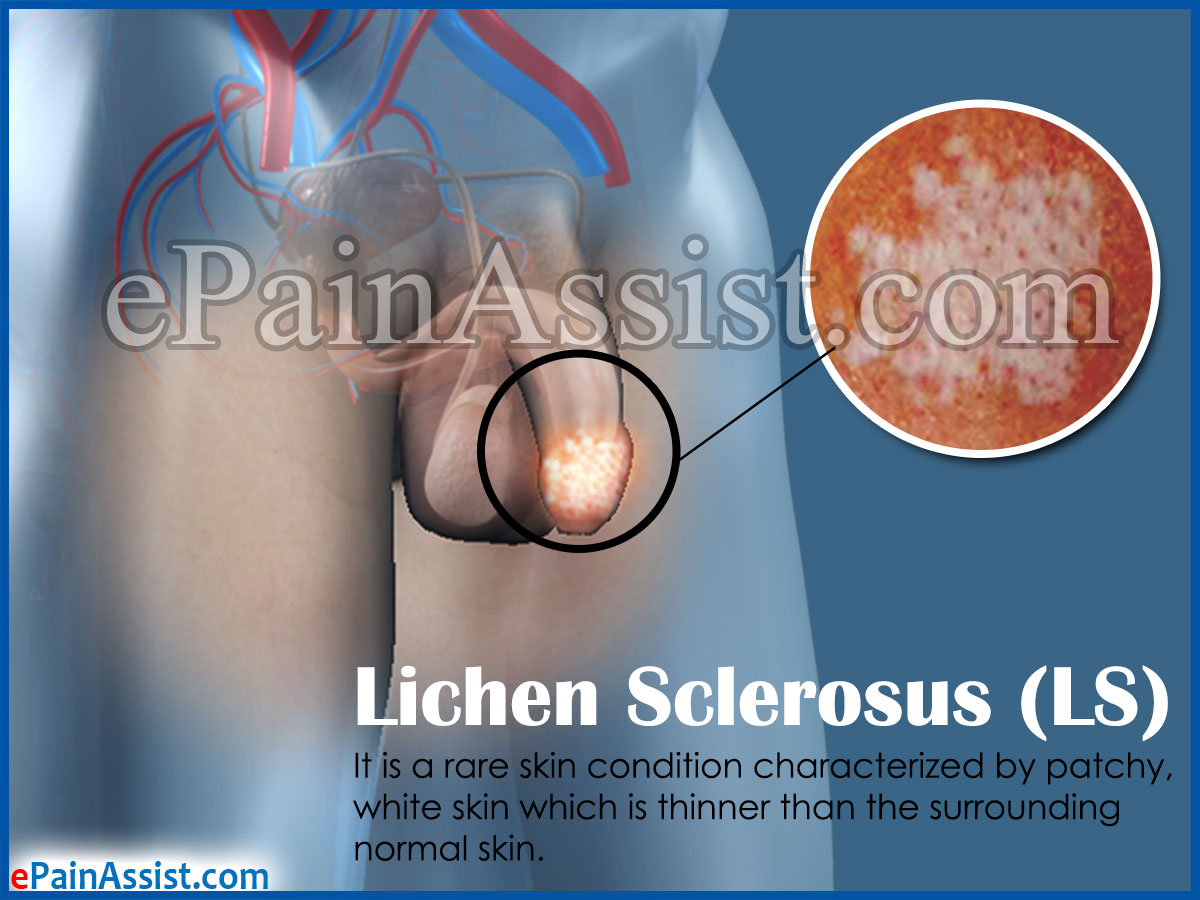Lichen Sclerosus (LS) is a rare skin condition characterized by patchy, white skin which is thinner than the surrounding normal skin. Skin from any part of the body can be affected by lichen sclerosus; however, it more commonly affects the skin of vulva, skin surrounding the anus and foreskin of the penis. Postmenopausal women are at a higher risk for developing this condition; however, it can affect anyone. It is important to treat Lichen Sclerosus (LS) as soon as it’s discovered, as leaving it untreated can cause other complications. In some cases, lichen sclerosus resolves on its own without any treatment.

Treatment comprises of corticosteroids, immune-modulating medications, UV light therapy and topical sex hormones.
Causes of Lichen Sclerosus (LS)
The exact cause behind Lichen Sclerosus (LS) is not clear. According to experts, it could occur due to absence of sex hormones in the involved skin. The other cause thought to cause lichen sclerosus is an overactive immune system. Previous history of skin damage can increase the chance of having lichen sclerosus at that damaged skin site. Even though lichen sclerosus affects the skin around the genitals, this condition is not contagious and does not spread through sexual contact. Lichen sclerosus is more common in postmenopausal women, but it can occur at any age and in men and children too. The skin around vulva is affected in women, and the foreskin of the penis in uncircumcised males is affected. Children with lichen sclerosus will find an improvement in their signs and symptoms at the time of puberty.
Signs and Symptoms of Lichen Sclerosus (LS)
Lichen Sclerosus (LS) can occur anywhere. Sometimes patient does not have any symptoms. Symptoms commonly seen in Lichen Sclerosus (LS) are:
- Severe itching in the affected region.
- Discomfort in the affected region, especially if lichen sclerosus affects the skin surrounding the genital or anal region.
- Appearance of white, smooth spots on the skin, which can later develop into blotchy and mottled patches.
- Patient experiences easy bruisability or tearing.
- In severe lichen sclerosus, there is blistering, bleeding or development of ulcerated lesions.
- Dyspareunia or painful intercourse.
Investigations for Lichen Sclerosus (LS)
- A physical examination.
- Biopsy where a small part of affected skin/tissue is removed and sent for microscopic analysis.

Treatment for Lichen Sclerosus (LS)
Mild cases of Lichen Sclerosus (LS), where the genitals are not involved and if there are no symptoms, then treatment may not be required and the lichen sclerosis gets better on its own.
Treatment for lichen sclerosus present on or around the genitals and/or anus, or that has progressed to other parts of body comprises of:
- Corticosteroid ointments/creams help with itching and are applied to the affected skin daily. After many weeks of use, the application is cut down to twice a week to prevent recurrence. Patient is monitored closely for side effects, such as skin thinning, which is seen with prolonged use of topical corticosteroids.
- Immune-modulating medications, like pimecrolimus and tacrolimus, are also prescribed.
- UV (ultraviolet) light therapy can be done for affected areas other than the genitals.
- Topical sex hormones may also be prescribed for treating lichen sclerosus, but according to research it may not be as effective as other treatment options.
- Circumcision or removal of the foreskin is the common treatment done for Lichen Sclerosus (LS) in uncircumcised men.
- Surgery for Lichen Sclerosus (LS) in the genital/ anal region in women is not usually recommended, as the condition can come back after the surgery.
